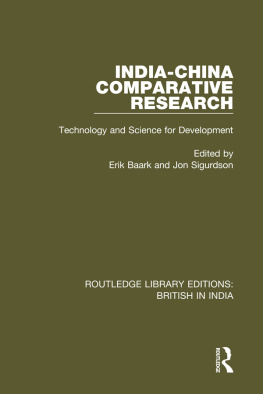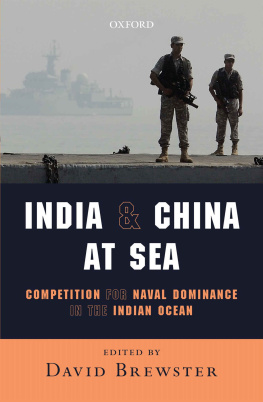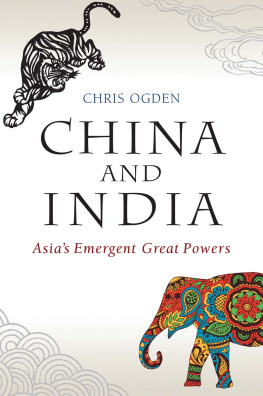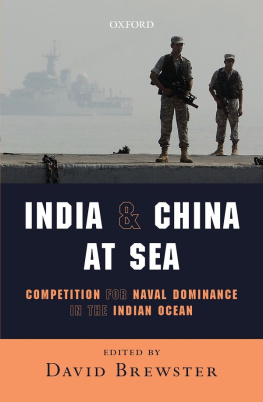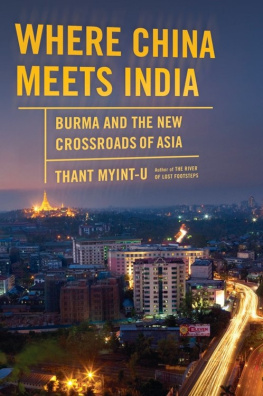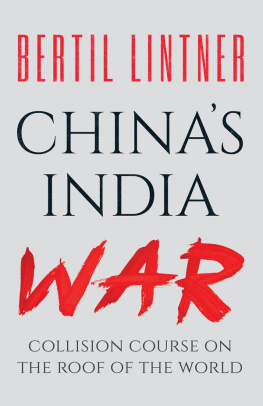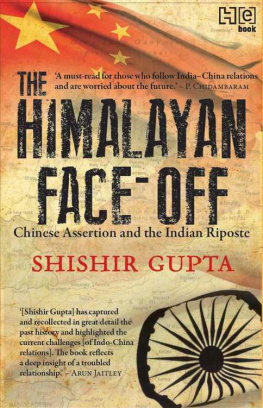Requests for permission to reproduce material from this work should be sent to permissions@press.princeton.edu
ACKNOWLEDGMENTS
WHEN I TRAVELED for the first time to India in 2010, I was prepared to be overwhelmed. But colleagues and friends opened their doors for me, and that made all the difference. In Delhi, I met dear friends Partha Mukhopadhyay, a senior fellow at the Centre for Policy Research, and his wife, Kavita Iyengar, an artist and economist at the Asia Development Bank. They welcomed me into their home, and Ive stayed with them in Delhi every time since. In Mumbai, Liza Weinstein introduced me to Devika Mahadevan, who kindly hosted me and guided me into the world of Mumbais nongovernmental organizations (NGOs). In Kolkata, Manashi Ray, a PhD student at Michigan State University at the time (and now a tenured professor of sociology), arranged to have me visit her family and relatives in the town of Singur. Just outside Kolkata, I was a wide-eyed passenger in a car driven by Gavin Shatkin, a prolific urban scholar of Southeast Asia, as we toured the citys periphery, where buffalos roamed among new towns under construction.
On returning from that first trip to India, I was fortunate to receive a residential fellowship from the Woodrow Wilson International Center for Scholars in Washington, DC. During that year-long fellowship, I had the luxury of time to read extensively on the historiography of local governance in China and India. I presented the initial ideas for this book at the centers colloquia and received excellent feedback. I want to thank the centers colleagues and 201112 cohort of fellows.
The bulk of the fieldwork for the book was conducted between 2013 and 2016, when I made multiple trips to India and China. I would like to thank the people who kindly agreed to talk to me in Delhi, Mumbai, Kolkata, Singur, Beijing, Guangzhou, and Wukan. They ranged from local officials, developers, residents, and representatives of NGOs to artists, journalists, writers, and environmental scientists. Without their input and insights, I would not have understood the contestations over housing, land, and environmental issues in these places.
As I dove deeper into the research, I tested out ideas during presentations at many conferences and workshops. Many thanks to my gracious hosts: Mary Gallagher and George Steinmetz at the University of Michigan, Deborah Davis at Yale University, Yu Xie at Princeton University, Tony Orum and Tingwei Zhang at the University of IllinoisChicago, Saskia Sassen at Columbia University, Dali Yang at the University of Chicago, Youqin Huang at SUNYAlbany, Shubhra Guruani at York University (Toronto), Partha Mukhopadhyay at the Centre for Policy Research (Delhi), Yinghong Huang at Jindal Global University (Sonipat), M. Vijayabaskar at the Madras Institute of Development Studies (Chennai), Luiz Cesar de Queiroz Ribeiro at the Federal University of Rio de Janeiro, Ye Lin at Sun Yat-Sen University, Fox Hu at Hong Kong Education Institute, and Loraine Kennedy at cole des Hautes tudes en Sciences Sociales.
The book would have taken much longer to finish without the Frederick Burkhardt Residential Fellowship from the American Council of Learned Societies in 201617. I was based at the Newberry Library in Chicago, where Bradford Hunt, an urban historian of public housing, warmly hosted me and offered helpful comments on chapter drafts. The final rounds of revisions benefited from a book publication grant from the China Studies Center at the University of Michigan. With the centers support, I was able in 2018 to organize an intense day-long workshop at which colleagues critiqued an early manuscript of the book. Special thanks to those who participatedLiza Weinstein, Martin Murray, William Hurst, Peter Carroll, Sanjeev Vidyarthi, and Marco Garrido.
Lastly, I want to thank my husband, Alan Lepp, who has always been the first reader of everything I write. His insistence on clear writing has forced me to sharpen my prose, and his wide-ranging interest from literature to street photography reminds me that there are so many ways of storytelling, and social science is just one of them. Our baby Rivka was born at the end of this book project. One day soon, we hope to take her to see the colorful and vibrant cities that are featured in the pages that follow.
FIGURES AND TABLES
Figures
Xiancun, Guangzhou
The airport slum, Mumbai
Urbanization rates of China and India
Map of Guangdong province and Wukan
Wukan harbor with fishing boats
Wukan village council building
Lin Zuluan, the newly elected village leader
Map of West Bengal and Singur
Railroads connecting Singur to Kolkata
Market streets, Singur
Map of Xiancun in Pearl River Newtown
A street lined with stores, Xiancun
Redeveloped Liede village, 2013
A migrant pulling a cart, with W hotel in the background
Ongoing demolitions at Xiancun
The international terminal of the Mumbai airport
Map of Chhatrapati Shivaji International Airport and surrounding slums
Slum residents overlooking the airport runways
Streets inside the airport slum
Tables
The features of the Target Responsibility System for air pollution control in Beijing
The top twenty most polluted cities in the world

Map of China

Map of India
GOVERNING THE URBAN IN CHINA AND INDIA
1
Introduction
I TRUDGED THROUGH dirt lanes muddied by rain on my way back to Xiancunan urban village sitting right in the middle of Guangzhous central business district. It was late December of 2016, and I wanted to snap photos of the place at night. Urban villages, called chengzhongcun in Chinese, are hybrid informal settlements blending urban locations with rural collective land ownership. Originally these were agricultural villages, some even dating back centuries to Chinas imperial era. In the 1980s, many villages began to lose farmland to rampant urban construction led by developers in conjunction with the city government. To make a living, villagers started growing apartments on their remaining land and renting out rooms to migrant workers. More than three hundred such urban villages have appeared in Guangzhou, the largest city in the Pearl River Delta in south China. Almost half of the citys inhabitants (six million out of thirteen million) live on these pockets of rural land engulfed by urban development.


